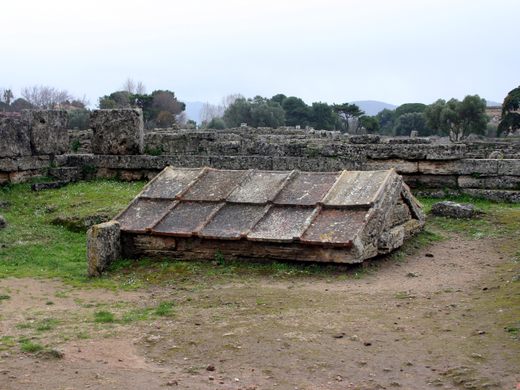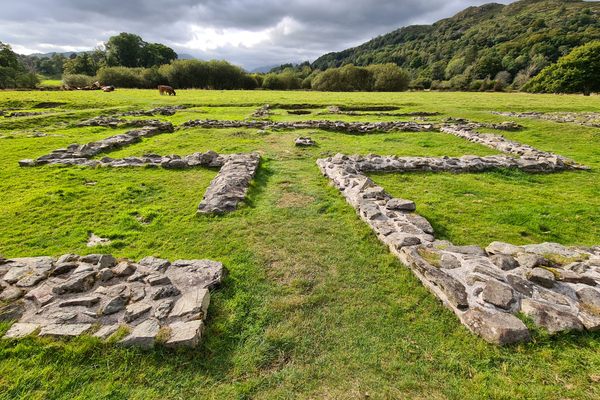Sacello Ipogeico
The only visible remains of this ancient Greek underground temple is its roof protruding from the earth.
The archeological park of Paestum is one of the most important historical sites of Magna Graecia. The ancient Greek town, located near the coast of Campania south of Salerno, features some temples in amazing condition.
The city of Paestum (known to the Greeks as Poseidonia) was founded by people belonging to the Greek colony of Sybaris in Calabria during the 7th century BC. When Sybaris was subjugated by Kroton in 510 BC, many people living there left the city and reached Poseidonia, which then became the Roman town of Paestum and was later abandoned during the Middle Ages.
Three large Greek temples are the main attractions of Paestum, but the park is much larger, with intact city walls and an amphitheater. One of the smaller structures is the heroon, a type of ancient Greek shrine dedicated to a hero. The heroon of Paestum is thought to have been erected as a cenotaph to celebrate Is, the mythical founder of Sybaris after the Sybarites moved to the region. The shrine was constructed underground, and after modern excavations during the 1950s, the tumulus above the heroon was removed and now the roof can be seen sticking out of the ground. The rest remains buried.
Inside the heroon, there is a low stone chamber with a pitched roof. Many objects were discovered inside such as Greek pottery and bronze vessels that contained traces of honey. All the objects discovered are now stored in the museum.
















Follow us on Twitter to get the latest on the world's hidden wonders.
Like us on Facebook to get the latest on the world's hidden wonders.
Follow us on Twitter Like us on Facebook